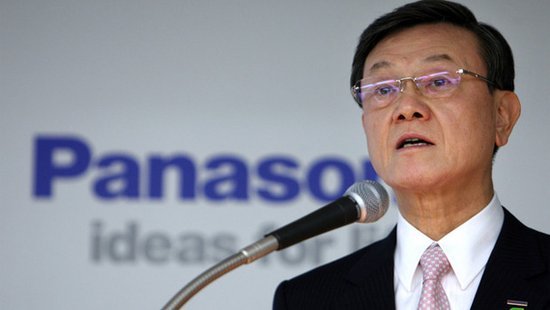[Global Technology Reporter Wang Huan] According to “Nihon Keizai Shimbun†reported on March 27, Panasonic will further integrate six loss-making businesses. In addition to discussing the sale of LCD panel production lines and the semiconductor company's stock in fiscal year 2017 (as of March 2018), we will also split three business units such as digital cameras in the spring of 2017 to reduce staffing. In 2012, Matsushita, the president of Matsushita, took charge of large-scale integration. Although the business recovery of the company has been restored, its performance is still sluggish. After Matsushita's integration, it still can't see the next move, which reflects the attitude of the world's large-scale electronics companies that are hard to cultivate new profit sources. Data map Split three business units Panasonic had previously withdrawn its plasma TV and plasma panel business and sold lead-acid batteries and other businesses. This integration is equivalent to the final disposal of the remaining loss business. The integration plan reflects the intentions of Jinhe and is formulated by the company's management planning department. Specifically, one of the two production lines at the LCD panel factory in Kushiro City, Hyogo Prefecture will be discontinued and sold. In the residential PV system business, it will consider reorganizing Japanese factories. Regarding the semiconductor business, it has started discussions on the sale of the equity of a production company that is a joint venture with an Israeli company. Panasonic will split three business units that are engaged in digital cameras, telephone exchanges, and optical discs. The plan will be assigned to other departments, while reducing staff and reducing business scale. Panasonic has 37 business units as of the end of 2016, and 6 businesses that are targeted for integration. The total sales for fiscal year 2016 were approximately 380 billion yen, accounting for 5% of the total. It is estimated that the operating profit or loss will be a total loss of approximately 46 billion yen. Panasonic lost more than 1.5 trillion yen in the two years ending in fiscal 2012 due to failed plasma TV services. At the moment of survival, Jin He had a large-scale integration. Withdrawal from the United States and China’s TV production business, as well as the personal smart phone business in Japan. Through the sale of some semiconductor factories and lead battery business, it achieved a final profit of more than 100 billion yen after fiscal year 2013, improving its operating conditions. Expected 20% drop in net profit The market believes that compared with Sharp, which was caught in an operating crisis, the ingenious manipulation of Matsushita's giant ship seems to promote faster integration. However, the performance after the integration is still weak. The result of Panasonic continuing to maintain its business in the loss field is that the price competitiveness of many commodities has declined. For FY 2016, the full-year performance forecast was lowered for two consecutive fiscal years. Matsushita’s net profit (International Accounting Standards) for the current fiscal year is expected to be 130 billion yen, down 20% year-on-year. Sales of 7.35 trillion yen, a drop of 4%, will hit the lowest level since fiscal year 2012. Even if the fixed fee is reduced after the integration, it still cannot cultivate a new profit basis. In addition, improvements in the operating conditions of the loss-making sector have also been postponed. There is a voice in the old staff that "the company is filled with a sense of stagnation." The purpose of this integration is to fully eliminate business losses and improve the system for re-growth. Jinhe positioned the automobile and residential areas as the pillars for the future and is expected to achieve solid growth, but these are not new areas. Panasonic's current operations are merely liquidation of its loss-making business. It is still not a matter of restructuring the business system and transforming it into a service-oriented one. Double profit in 2 years Global large-scale electromechanical companies have been plagued by falling prices. To solve this problem, General Electric of the United States acquired Alstom’s energy business and sold its home appliance business. Hitachi Ltd. acquired Italy's railroad vehicle manufacturing business and shifted its leasing and logistics operations beyond the targets of the merger. Jinhe is observing these precedents for advancing business adjustment. "In 2017, we will promote corporate restructuring, set deadlines, and promote reforms." Jinhe expressed this to all employees at the beginning of the year. In fiscal year 2018, Panasonic will usher in a business for 100 years and propose a goal of achieving a combined net profit of 250 billion yen or more. In order to double profit in two years, new sources of profit must be found. In cooperation with Tesla in the field of vehicle batteries, Panasonic has already sown seeds. Not only limited to integration, how to advance the reform will determine the future of this veteran company representing Japan. Shenzhen Aierbaita Technology Co., Ltd. , https://www.aierbaitavape.com
August 19, 2022